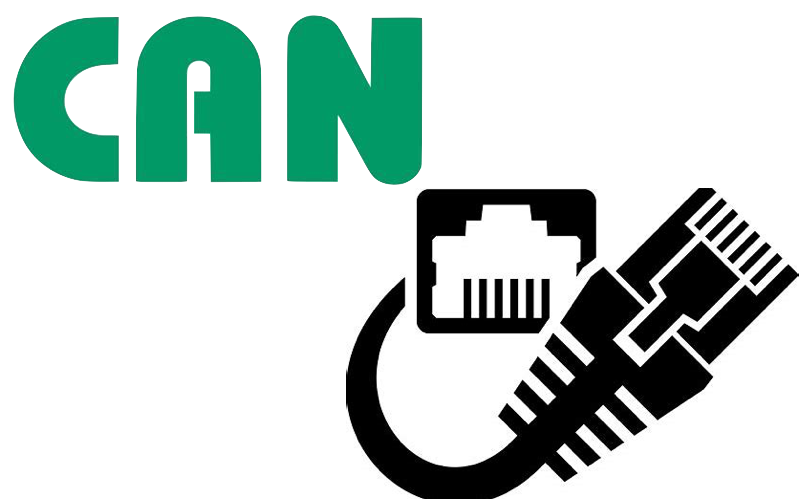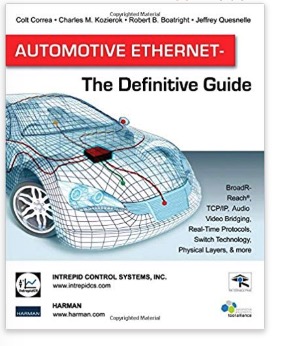Recent Posts
Comparison Of CAN Bus And Ethernet Features For Automotive Networking Applications
Posted by on

Ethernet, the most widely used LAN technology in homes, offices, and factories, is increasingly utilized in the automotive world in the form of Automotive Ethernet. Vehicles now routinely accommodate multiple cameras, on-board diagnostics, advanced driver assistance systems (ADAS), infotainment systems, and in-dash displays. With all the added hardware and software comes a massive demand for bandwidth.
Along with the high bandwidth comes the desire for networks with an open architecture that is scalable, future-proof, and can maintain multiple systems and devices.
Many of the requirements sketched out above are beyond the capabilities of the Controller Area Network (CAN Bus) technology, while Ethernet promises to enhance performance and allow powerful and valuable applications. Yet, CAN Bus networks address a variety of safety and performance features that Ethernet cannot match.
Note: In the following, I will use the term Ethernet rather than Automotive Ethernet. Compared to standard Ethernet as we know it, Automotive Ethernet uses a different hardware layer to address the requirements for harsh environmental and electrical conditions as they occur in vehicles. Nevertheless, the actual protocol stack remains the same, which represents the core of this ingenious design.
Controller Area Network And The Pursuit Of Higher Bandwidth
Controller Area Network is undoubtedly superior to other serial protocols in regard to low cost, the ability to function in a challenging electrical environment, a high degree of real-time capability, excellent error detection and fault confinement capabilities and, almost contradictory to the previously mentioned features, ease of use. The ingenious design of CAN is one of the deciding factors that guaranteed a long life span of the technology, despite the emergence of newer technologies promising better performance.
However, since the publication of the CAN Bus Standard, there was a quest to create and establish better and faster fieldbus technologies to meet the requirements for higher bandwidth.
The development of CAN-based higher layer protocols opened the door to industrial automation, but their pitiful bandwidth guaranteed a reduced lifetime (In fact, CANopen and DeviceNet are virtually at their EOL; only a fool would use them for new development). Here, too, Ethernet took over the market in the form of Industrial Ethernet (Ethernet/IP, Ether Powerlink, EtherCAT, SERCOS, etc.).
CAN-in-Automation (CiA - not related to the American Homeland Security Department), the gatekeeper of the CAN Bus Standard, engaged in several activities to improve the performance of CAN Bus controllers. One of the results was the release of CAN FD (Flexible Data Rate), which turned out to be not functioning in existing networks based on Classical CAN (see my post CAN FD On A Legacy CAN Bus Network Is Not A Good Idea Due To Compatibility Issues).
In June of 2019, CiA announced its intention to launch yet another flavor of the ever-popular CAN Bus technology, named CAN XL, which supports an extra-large (XL) payload of up to 2048 bytes (See my post CAN-in-Automation (CiA) To Launch CAN XL During International CAN Conference). In my personal opinion, by the time CAN XL effectively reaches the market, it will be considered obsolete compared to improved and thus much more powerful Ethernet technologies. In the meantime, I will be waiting for CAN-SCFE (Supercalifragilisticexpialidocious).
Despite the above said, let me make a case for "Classical CAN": The standard CAN Bus technology is, due to its reliability plus a long list of ingenious features, the best choice for serial communication in embedded distributed (networked) control systems. CAN Bus is an excellent option for small embedded systems and, after all, automobiles as long as you utilize it within its original capabilities.
Comparing CAN Bus And Ethernet Based Communication
Note: Some of the information presented here is based on a paper by Prof. Dr.-Ing. Konrad Etschberger with the title Comparing CAN- and Ethernet-based Communication. While I don't dispute the correctness of the technical characteristics described in this article, I deem the conclusion as slightly tainted in favor ot CAN and its (doomed) higher-layer protocols. For instance, the comparison of data frame frequency (FPS - Frames Per Second) is highly flawed, since it limits Ethernet to eight bytes per data frame.
First of all, the most obvious point: Ethernet and CAN Bus are two very different protocols, both designed for particular and contrasting requirements. CAN Bus was designed for safe data exchange in the harsh environment of vehicles, while Ethernet's purpose is the transport of massive portions of data within a reasonable time frame. Thus, a direct comparison is complicated and is prone to unfair evaluation due to cherry-picking specific characteristics.
We already know that Ethernet provides faster transmission speed (10/100 Mbit/sec compared to CAN's 1 Mbit/sec at minimal network length) combined with a virtually unlimited amount of data (CAN Bus is limited to 8 bytes per data frame).
However, CAN owns a number of features that ensure its future in automobile applications:
- The CAN Bus protocol is integrated in a single chip, the CAN controller, which significantly reduces the amount of software needed to establish a communication.
- Per default, Ethernet does not provide secure communication. When an incorrect data frame is detected, it will be discarded. Higher-layer protocols (e.g. TCP/IP) add some data safety features but only through a considerable amount of additional software. In contrast, CAN guarantees that no data frame gets lost, plus it can detect a malfunctioning node (all this is part of the on-chip protocol).
- CAN detects and recovers from an error condition within 23 micro-seconds @ 1 Mbit/sec, while TCP/IP at 100 Mbit/sec is limited to a response time of about one milli-second (a factor of roughly 44).
- CAN provides collision-free and predictable arbitration to manage network access between competing nodes. The bus arbitration process (CSMA/CD - Carrier-Sense Multiple Access with Collision Detection) is Ethernet's greatest weakness due to unpredictable arbitration times. In the worst-case scenario, when message collisions occur continuously, nodes will dump the message frame and will not attempt a re-transmission.
Looking at the greater picture, it makes sense to use both technologies for applications where their individual strengths are most beneficial.
For more information on the topic of Controller Area Network and Automotive Ethernet, see:
- An Inside Look At The Automotive Ethernet Protocol...
- Automotive Ethernet...
- Automotive Ethernet - The Definitive Guide...
- Guide to Automotive Connectivity and Cybersecurity: Trends, Technologies, Innovations and Applications...
- What's the Difference Between CAN and Ethernet?...
- A Brief Introduction to Controller Area Network…
- A Comprehensible Guide to Controller Area Network…
- Controller Area Network (CAN Bus) – Serial Network Technology For Embedded Systems – PPT Presentation…
Automotive Ethernet - The Definitive Guide
Ethernet, the most widely used LAN technology in the world, is taking the automotive world by storm. As the electronic content in cars proceeds to improve, Ethernet guarantees to gain performance and enable compelling and valuable applications.
In its 1,161 pages, Automotive Ethernet - The Definitive Guide describes how Ethernet technology has been adapted via Broadcom's new BroadR-Reach® standard to bring Ethernet hardware and applications to vehicles.
BroadR-Reach technology is an Ethernet physical layer standard designed for use in automotive connectivity applications.
BroadR-Reach technology allows multiple in-vehicle systems to simultaneously access information over unshielded single twisted pair cable.
Benefits for automotive manufacturers integrating the BroadR-Reach Ethernet standard include reduced connectivity costs and cabling weight.
 Loading... Please wait...
Loading... Please wait...

